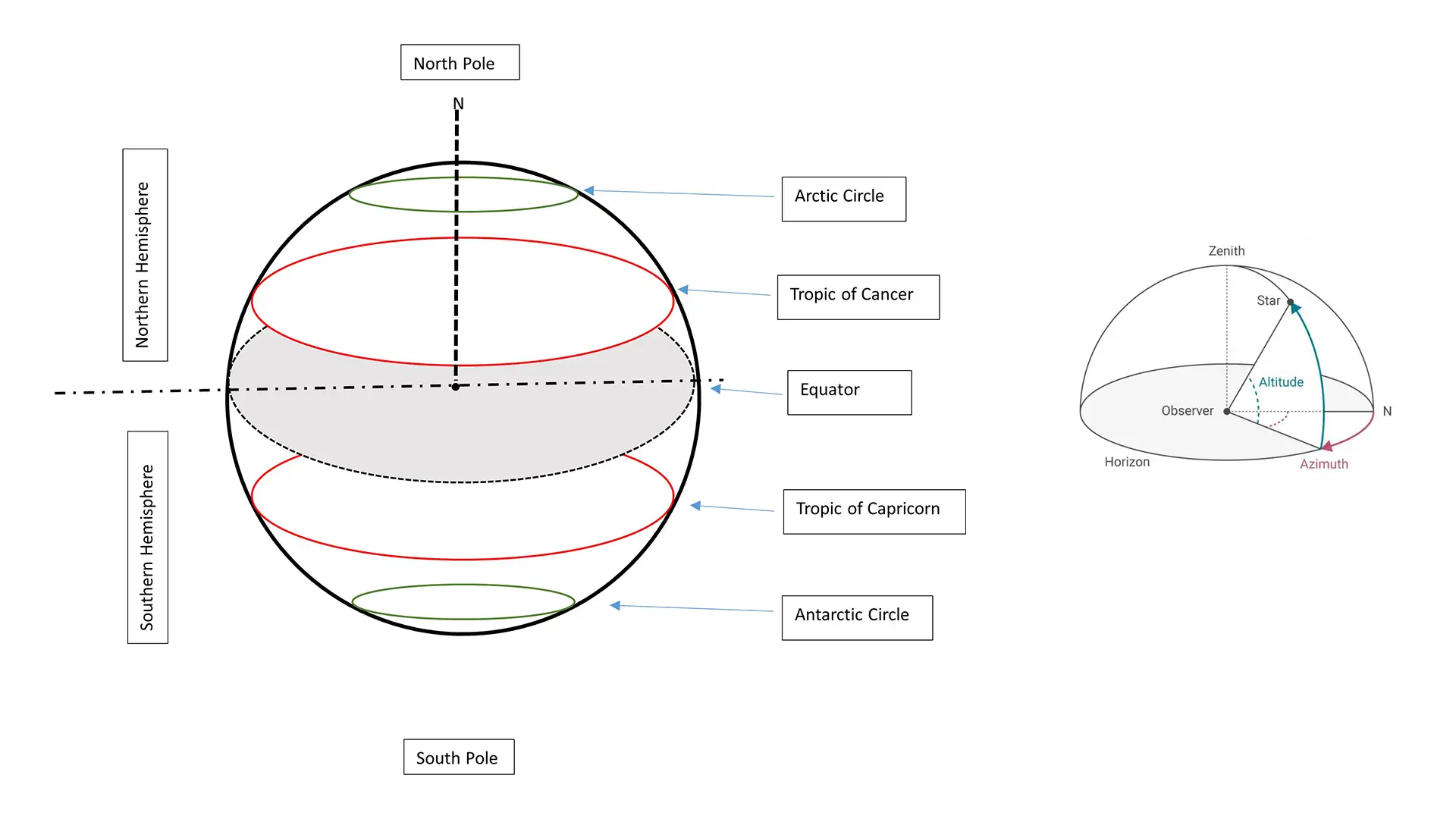-
Tropic of Cancer and Tropic of Capricorn
These are two latitude lines marked on the Earth which are located 23.5° north and south of equator respectively. These are the farthest point where the sun will be directly on the top.
-
Solstices
Solstices are those times of the year at which the position of earth is tilted in such a way that each hemisphere is tilted maximum closer or away from the sun. Therefore each hemisphere has one summer solstice and one winter solstice. Summer solstice for either hemisphere occurs at that times whenever the same hemisphere is closer towards the sun whereas the other hemisphere will have winter solstice at that time. Sumer solstice for northern hemisphere occurs around 21 June whereas 21 December is for southern hemisphere.
-
Equinox
It the moment of the time when the sun is directed on the top of the equator. So there will be two equinoxes, around 20 March and around 23 September. During the equinox, both hemispheres face equally towards the sun. The day and night times are almost equal i.e. 12 hours of daylight and 12 hours of night. However, these effect occurs bit earlier due to refraction of light. In other word, the darkness will go before the sunrise and still there will be light after the sun set too.
-
Solar Altitude
Vertical angle between the sun and the horizontal plan (the ground). It is between zero to ninety degree.
-
Azimuth
It is the east-west position of the sun. It is measured in the angle between 0°-360°. The true north is always represented as 0°, moving clockwise east 90° and so on.
-
Zenith
It is the highest point in the sky directly over the observer. Other words, highest point reached by a celestial body.
-
Latitude(ø)
It is an angle measured from the radial line to its projection on equatorial plane.
-
Longitude(L)
It is an angle measured from the Greenwich meridian line (England) to the projection of radial line. (line joining the observer location and centre of earth).
-
Perihelion
The point in the earth’s elliptical orbit when it is closest to the sun. It falls around the start of January.
-
Aphelion
The point in the earth’s elliptical orbit when it is farthest from the sun. It occurs in the start of July.
Any Question / Leave a comment ?
--- Thank you for your attention! ---






